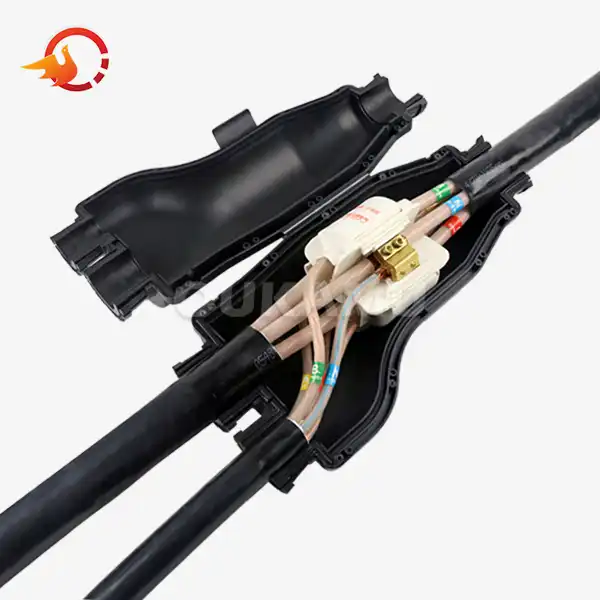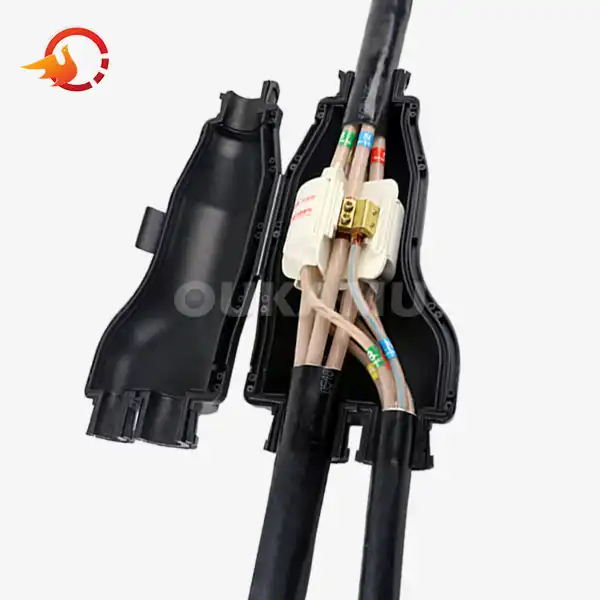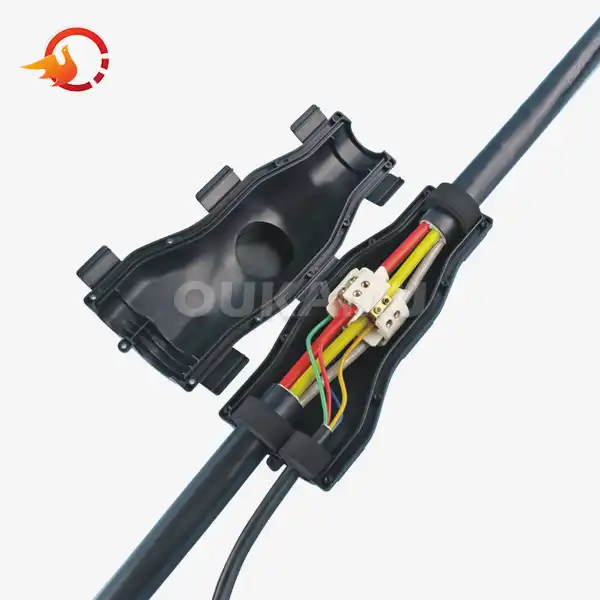Best Cable Joint Connectors for Low Voltage Projects
 2025-08-01 10:52:26
View:389
2025-08-01 10:52:26
View:389In the realm of low voltage electrical systems, the importance of using high-quality cable joint connectors cannot be overstated. Often overlooked during project planning, these components are vital to the integrity, safety, and performance of the entire electrical installation. Whether you're managing a small residential setup, a sprawling commercial facility, or a complex industrial system, the right cable joint connectors will significantly influence your project's reliability, ease of maintenance, and compliance with safety regulations.
This guide offers an in-depth look at cable joint connectors designed for low voltage applications—typically defined as systems operating at up to 1000V AC or 1500V DC. We’ll explore their function, key characteristics to look for, and highlight some of the most effective options currently on the market.
Understanding Cable Joint Connectors
Cable joint connectors serve as the essential links in electrical systems, connecting sections of cable while maintaining both electrical continuity and mechanical strength. They are engineered to protect the internal conductors from external threats such as moisture, dust, temperature fluctuations, and mechanical stress. Especially in low voltage applications, these connectors must ensure minimal resistance, zero leakage, and maximum durability.
The design and composition of a connector must accommodate the application’s electrical specifications and environmental conditions. A poor-quality joint can lead to heat generation, signal loss, corrosion, or even catastrophic failure. Therefore, understanding how these connectors work and what sets the best ones apart is crucial for any low voltage project.
Key Features of Quality Cable Joint Connectors
Not all cable joint connectors are created equal. The following features define a high-performance connector that meets the rigorous demands of low voltage installations:
- Insulation: Superior insulation materials—such as cross-linked polyolefin or silicone—prevent electrical leakage and reduce the risk of short circuits.
- Flame Retardancy: Connectors should meet fire safety standards to inhibit flame propagation in the event of a fault or overload.
- Waterproofing: Essential for outdoor installations, underground projects, or high-humidity areas, waterproofing protects against corrosion and current leakage.
- Durability: Connectors must endure thermal cycles, UV exposure, and mechanical wear without degrading over time.
- Ease of Installation: Tool-less or user-friendly installation designs help save time, reduce labor costs, and minimize the risk of human error.
- Compatibility: The ability to handle multiple cable sizes, types (armored, unarmored, flexible), and materials (copper, aluminum) increases the utility of the product across various applications.
These features are especially important in systems that must operate continuously for years, with minimal maintenance or exposure to human intervention post-installation.
Top Cable Joint Connectors for Low Voltage Applications
Below is a curated list of some of the most reliable and widely used cable joint connectors for low voltage environments. These options have been selected for their performance, ease of use, and compliance with international safety standards.
ZR-JFZ-70/35 Integrated T-Connector
The ZR-JFZ-70/35 T-connector from Xi’an OUKAMU is a cutting-edge solution tailored for low voltage distribution networks. This product streamlines the branching of cables without interrupting the main conductor path, saving both material and labor:
- Accommodates main cables from 25–70mm² and branch cables from 2.5–35mm²
- Rated operational voltage: 0.6/1kV
- Features: insulated, flame-retardant, fire-resistant, waterproof, and compact
- No need to cut the main cable or keep additional lengths for splicing
- Allows flexible positioning, ideal for tight or complex layouts
- Saves up to 2–3 meters of main cable per joint, significantly cutting costs
- Tested to comply with GB/T 14048.7-2016 and international IEC standards
This connector is particularly beneficial in smart grid projects, solar panel connections, lighting networks, and anywhere that modular, space-efficient design is critical. Its reusability and minimal disruption installation process make it a smart investment for sustainable infrastructure projects.
Heat Shrink Cable Joint Kits
Heat shrink joint kits remain a staple in low voltage cable splicing, offering a well-established balance between performance and cost-effectiveness. These kits usually consist of:
- Heat-shrinkable outer sleeves
- Sealing mastic and insulation tapes
- Mechanical or compression cable connectors
- Optional grounding kits for armored cables
The heat shrink sleeve provides robust protection against moisture, dust, and abrasion. Once heated, it contracts to form a tight seal around the cable, maintaining mechanical strength and insulation. These kits are compatible with a wide range of conductor materials and can be used both indoors and outdoors, including in direct burial applications.
They're particularly suited to scenarios where a traditional enclosure would be impractical or space-prohibitive. Technicians appreciate their adaptability, but proper installation requires a heat gun or torch and moderate training.
Gel-Filled Branch Cable Joints
Gel-filled joints offer an elegant solution to environmental sealing, providing excellent protection with minimal effort. Designed for quick and safe installation, these pre-molded joints come pre-filled with non-toxic insulating gel that conforms around the cable when closed.
- No need for heat or tools
- Reusable and re-enterable design for future upgrades
- Ideal for direct burial and damp environments
- UV- and ozone-resistant enclosures available
These joints are especially favored in telecommunications, lighting systems, and irrigation infrastructure. Their ability to be reopened and resealed allows for flexible future modifications, making them a cost-effective choice for evolving installations.
Mechanical Cable Joints
Mechanical cable joint connectors are ideal when speed and flexibility are top priorities. These tool-free connectors often use insulation displacement or compression technologies to create secure, low-resistance connections without needing specialized tools or soldering.
- Quick installation with minimal training required
- Built-in torque control to ensure proper tightening
- Transparent casings allow for visual inspection
- Accommodates a broad range of cable diameters and types
Because they eliminate the need for complex stripping or crimping procedures, mechanical joints are widely used in emergency power restorations, mobile applications, and temporary installations. They’re also useful in maintenance scenarios where downtime must be minimized.
Choosing the Right Cable Joint Connector for Your Project
Every low voltage project presents its own set of challenges and requirements. To choose the most suitable cable joint connector, consider the following factors:
Project Requirements
- Voltage and Current Rating: Ensure the connector is rated for your specific operating conditions.
- Cable Specifications: Consider conductor material, insulation type, and cross-sectional area.
- Environmental Conditions: Will the joint be exposed to moisture, dust, UV radiation, or chemicals?
- Installation Constraints: Evaluate accessibility, available space, and potential interference with other components.
- Maintenance and Future Access: If the system may need future modifications, re-enterable designs are preferable.
Regulatory Compliance
Always ensure your chosen cable joint connectors comply with local and international electrical standards. Look for third-party certifications such as:
- IEC 60502, IEC 61238 (International)
- UL, CSA (North America)
- CE, RoHS (Europe)
- GB/T 14048.7 (China)
Total Cost of Ownership
Initial purchase price is only part of the equation. Consider the following long-term factors:
- Installation labor and required tools
- Lifespan and maintenance frequency
- Downtime costs in case of failure
- Ease of upgrading or replacing connections
Manufacturer Support and Warranty
Reputable manufacturers not only provide quality products, but also offer valuable post-sale support. Look for:
- Detailed technical documentation
- Installation guides and training
- Warranty coverage and responsive customer service
Conclusion
The success of any low voltage project hinges on countless small decisions—one of the most critical being your choice of cable joint connectors. Whether you opt for the innovative ZR-JFZ-70/35 integrated T-connector, the time-tested reliability of heat shrink kits, the user-friendliness of gel-filled joints, or the speed of mechanical connectors, making an informed selection will ensure safety, efficiency, and cost-effectiveness.
By evaluating each product’s key features and aligning them with your project’s requirements, you can design and build systems that stand the test of time. Need guidance or product recommendations? Contact cable joint manufacturers at info@okmbranchcable.com. We’re here to help you select the ideal cable connection solution tailored to your low voltage application.
References
1. Smith, J. (2022). "Advancements in Low Voltage Cable Joint Technology". Electrical Engineering Quarterly, 45(3), 78–92.
2. Johnson, M. & Lee, S. (2021). "Comparative Analysis of Cable Joint Connectors for Industrial Applications". Journal of Power Systems, 18(2), 210–225.
3. Brown, R. (2023). "Environmental Impact Assessment of Modern Cable Jointing Techniques". Sustainable Electrical Systems, 7(1), 15–30.
4. Zhang, L. et al. (2022). "Performance Evaluation of Gel-Filled Cable Joints in Harsh Environments". IEEE Transactions on Power Delivery, 37(4), 3215–3228.
5. Thompson, K. (2021). "Cost-Benefit Analysis of Advanced Cable Jointing Solutions in Low Voltage Projects". Energy Economics Review, 29(6), 452–468.















